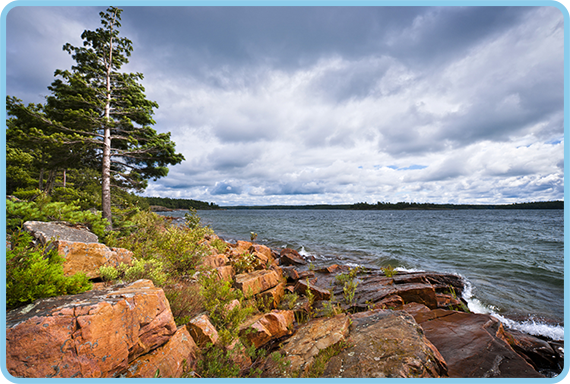Carving the Canadian Shield
The Canadian Shield is a circular region of ancient rock that covers half of Canada. Glaciers shaped the Canadian Shield. When the last ice age began, glaciers stretched across the land. More than 10,000 years ago, the ice age ended and the glaciers retreated.
As the glaciers moved, they scraped the land clean. They carved out Hudson Bay, the large body of water that sits in the middle of the Canadian Shield. The glaciers pulled away soil, uncovered rock, flattened mountains, and carved waterways. Today, the Canadian Shield is a rocky land covered in rivers, lakes, wetlands, and forests. The northern part of the shield is icy tundra.
The rocks of the Canadian Shield are more than 500 million years old. Some are 4 billion years old, almost as old as Earth. The shield contains useful minerals like iron, nickel, copper, zinc, uranium, gold, and silver. It also has boreal forests that supply timber. The rushing rivers of the shield provide hydroelectric power. People visit the Canadian Shield to hike, fish, hunt, camp, and enjoy the wilderness. The land is home to caribou, otters, wolverines, hares, bears, and migrating birds.
 |
|
This rocky shore in Killbear Provincial Park in Ontario shows the effect of glacial erosion on the Canadian Shield.View Larger Image
|
|
Elena Elisseeva/Shutterstock.com
|





